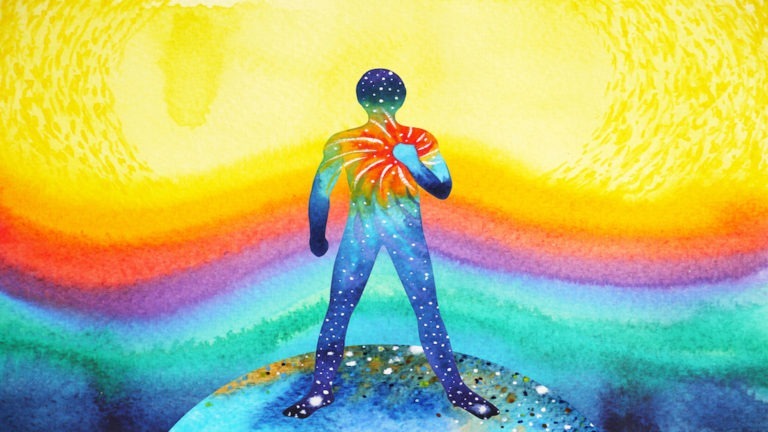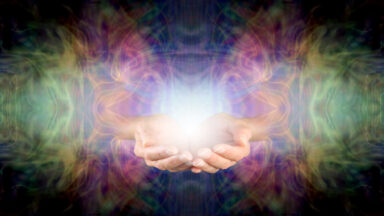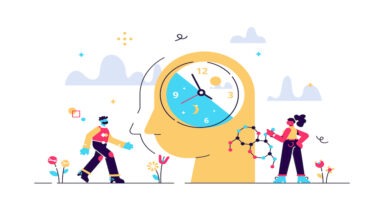Color Your World: How Colors Heal

Close your eyes. There are three rooms to choose from – blue, green, red. Which are you drawn to? Which do you turn away from?
In your mind, open the door and walk in and out of each space. How do you feel in a bright blue room? Blood red? Pea-green? Peaceful? Focused? Energized? Colors are more than paint swatches or a box of crayons. We live in a technicolor world, from our homes to our cars, to our wardrobe, to the natural spaces we inhabit.
Blue is not only blue, but it is also cerulean, turquoise, robin’s egg. It’s no coincidence that crime scenes are marked with yellow tape, or that traffic signs are yellow, green, and red. These are colors that we associate with certain responses — STOP! PAY ATTENTION! GO! But more than color’s ability to provide beauty, or inform us, “color is fundamental to our experience of the world around us,” and more importantly, color is integral to our power to heal.
Primary Colors and the Power to Heal
A brief look at the primary colors and their emotional and psychological effects can provide a solid ground to learning how to bring color therapy into your own life:
- Red: Energetic, passionate, sexual appetite and general vitality
- Yellow: Joy, non-attachment, free-spiritedness, generosity
- Blue: balance, strong survival instincts, clarity, calm nervous system
- White: Clarity, space, purity, spaciousness
- Black: Strength, power, autonomy, intelligence


A Short History of Color Theory
In his book, “Interactions with Color,” artist, teacher, and color theorist Josef Albers explored how color is felt, interpreted, and experienced. He wrote and taught about the interconnection of color to human experience, and how it is nearly impossible to see color in and of itself. When we see red, for example, all the tones and nuances of “red” are present, as are our memories’ associations with the color. Color is part of our emotional and psychological landscape.
Albers influenced generations of 20th-century artists and designers, but his understanding of color and emotion goes far beyond what lands on a canvas or in a museum; his work is connected to a long-standing tradition of using color and light in its capacity to heal. German writer and poet Johann Wolfgang Goethe’s Theory of Colors, published in 1810, introduced a Color Wheel based on perception and color’s natural order. Goethe was also a pioneer in attributing certain qualities to color: schön or beautiful; edel or noble; and gut or good.
Further back, cultures such as the Anasazi of the American Southwest built their great kivas to align the spirit with a single ray of sunlight; the Chinese art known as Feng Shui utilizes various energies, including color, to harmonize people with their environments, and has been enthusiastically embraced in hospitals, boardrooms, schools, and homes around the world. The Egyptian word for color, iwn, translates into “human character” or “personality.”
A World Without Color?
What if color is a mystery to you? If you’re one of the 200 million people who have one form or another of color blindness, how does the limitation or absence of color impact you? Most cases of color blindness are inherited and are caused by abnormal photopigments, cone-shaped molecules located in the retina. The most common form is red-green color blindness, with less of the population having blue-yellow color blindness. In very rare cases, complete color blindness can occur.
Those who live with color blindness have difficulty navigating everyday life, from traffic signs to warning signals; children experience obstacles in their learning environment. Color blindness can affect aspects of our lives we take for granted: traffic lights, warning signals, food preparation, and even appetite, as we are drawn to eat foods that visually appeal to us.
For children, color blindness can be difficult to diagnose and can cause issues in their educational environment, as well as with safety. There is much research being done by the paint industry that provides us with a plethora of color choices for our homes — Valspar Paint has recently collaborated with color blindness correction glasses manufacturer, EnChroma, to give those with color blindness the gift of seeing color. In case anyone underestimates the power of color to heal, the reactions of those recorded in this video shows how much color means to our connection to our world and each other.
Color, Healing, and the Seasons
In many parts of the world, Winter solstice is arriving — with it comes shorter days, more darkness, and yes, less color. The leaves are off the trees; the vibrant colors of spring and summer are dormant. For many, the lack of light and color at this time of year can bring about a case of the winter blues, and for many, a more severe condition known as Seasonal Affective Disorder, a cyclical kind of depression tied into the seasons. Along with exercise, nutrition, light spectrum lamps, color therapy is also an effective course of treatment, whether it is painting a room in a warmer color tone, to working with color therapy, or meditation.
How to Get Started With Color Therapy
Chromotherapy uses colors with specialized instruments to create an energetic field around the body through the vibrational waves contained in each color. Many incorporate light therapy into their daily self-care, especially those who live in geographic regions with extended periods of darkness, or those diagnosed with depression, color therapy has a deep effect on the physical, psychological, and emotional aspects of our lives.
Color therapy and healing can take many forms, from individual sessions with light and color spectrums that incorporate color wheels, colored crystal light, oils, or breathing in colors through meditation. Due to the frequencies found in colors, intentional exposure can have a wide variety of impacts and not simply through the visual stimulation that color provides. Color is thought to be able to enter our skin, our breathing, and is a much sought after therapy for everything from hormonal imbalance, to mild depression, to brain disorders.
If you’re just getting started, teacher, author, and meditation master Sally Kempton’s offer a short and powerful Healing Colors Meditation, a 10-minute practice invites the color and light spectrum as healing elements. Ready for something more in-depth? Light and energetic coach and counselor Brian Breiling discusses the power of color and healing with Regina Meredith. In this conversation, he speaks to the dangers of living without light, healthy light, and colors. In addition, there are a multitude of Color Healing and Color Therapy to choose from:
- Colorpuncture or Samassati Color Therapy uses color light along the meridians, chakra points, and acupuncture points to activate and heal energetic pathways.
- Crystal Healing applies colored crystals to restore physical, mental, and emotional healing.
- Color Silks Therapy incorporates colored silk, thought to contain highly energetic transference vibrations.
- Hydro Color Therapy is watercolor for the body, either through infusion, internal consumption, or colored lights placed in a bath or show.
Color brings us beauty, energy, and contains the power of color. Explore how color can impact your well-being, home, and workspace. You might surprise yourself at what you’ll learn! Have fun and tune into the amazing color palette of your life.
Why Do We Sleep? For More Reasons Than You May Think

Most of us spend about a third of our lives asleep, despite not really having an answer to the question, ‘why do we sleep?’ Now neuroscientists are realizing that sleep is more important than previously thought. They’re also realizing that the worn-out platitude, “you can sleep when you die,” is terrible advice, as that day will undoubtedly come sooner if you short yourself on a good night’s sleep.
According to most contemporary research, you should be getting around seven to eight hours of sleep every night, and if you think you can get by on fewer than that, there’s a really good chance you’re fooling yourself.
Why is Sleep Important?
While the exact mechanisms of sleep are still being studied, neuroscientists including Matthew Walker have made interesting learnings about what happens when we deprive ourselves of sleep and the impacts sleep (or lack thereof) has on society as a whole.
When we’re awake, Walker says that essentially, we’re causing low-level brain damage. By this, he is referring to the build-up of the sticky, toxic junk in our brain known as beta-amyloid. This accumulation of beta-amyloid has been found to correspond with the onset of Alzheimer’s, among many other adverse health effects correlated with a lack of sleep.
Sleep is beneficial as more than just a healing function; it also replenishes spent resources and regulates hormone levels that dictate our appetite, cognitive function, and motor skills. The two hormones that dictate whether we are hungry or full, ghrelin and leptin, have been observed to flare up and down, respectively, when we’re sleep deprived. This inevitably leads to an increase in hunger, but even worse, it leads our bodies to crave unhealthy and fattening foods — those heavy on carbs and light on greens. In fact, people who run on four to five hours of sleep per night tend to eat 200-300 more calories per day.
For men, sleep is an important regulator of hormones, most notably testosterone. Sleep-deprived males can have the same virility and strength as a man 10 years their senior. For women, a lack of sleep can lead to a significantly increased risk of breast cancer and drops in immune hormones.
According to Walker, just introducing a single night of just four hours of sleep among a normal eight-hour sleep schedule, can bring about a 70 percent drop in natural cancer-killing cells, the immune assassins that target malignant carcinogens. Every day our bodies produce these cells and others to fend off disease and maintain our health, and while a cat nap might make you feel refreshed, it won’t make up for the loss of these cells.





































